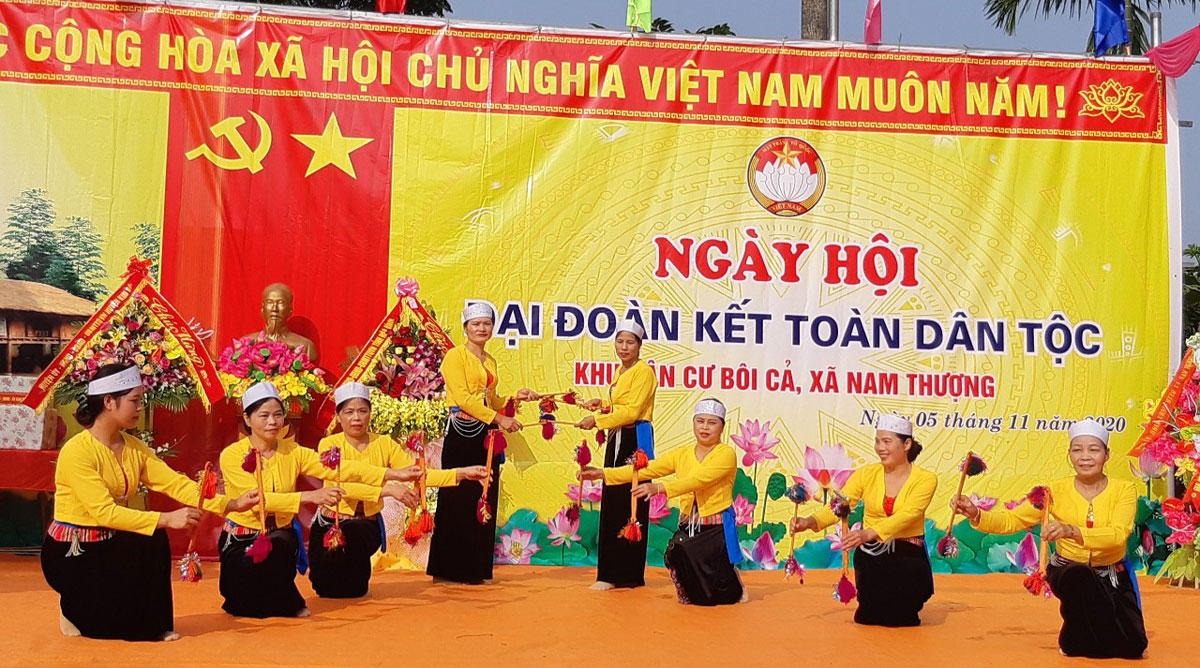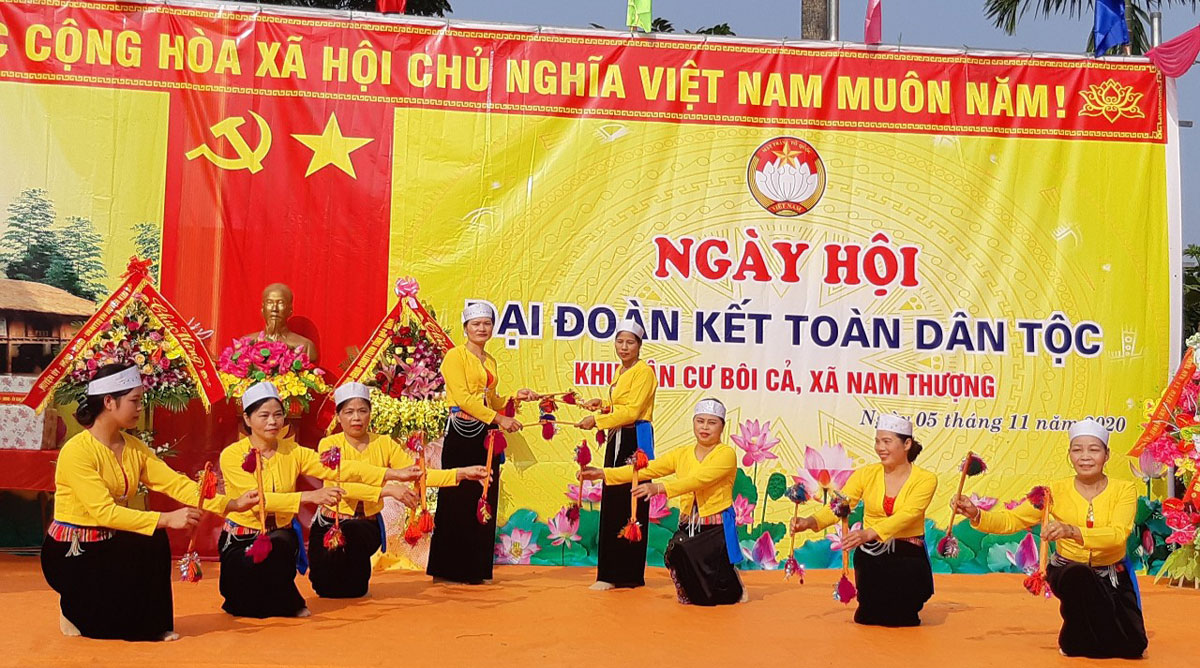
(HBO) - Boi Ca is among the most populous residential areas in Kim Boi district’s Nam Thuong commune. It has eight residential clusters of 362 households grouping 1,607 people. Both Muong and Kinh people live here, with the former accounting for 92 percent of the total local population.

Locals in Boi Ca stage a musical performance at the 2020 great national solidarity festival.
The locals have been encouraged to join a
campaign on the conduction of new-style rural building activities every
Saturday. So far this year, local households have donated 520 working days to
build 0.9km of rural roads and upgrade the commune’s cultural house, giving the
area a facelift.
Boi Ca residents have also seen their
living standards significantly improved thanks to their new development
orientations that focus on agricultural services and transport and
establishment of local teams of construction workers and carpenters. In 2020,
the local per capita income is estimated at 40.5 million VND (1,750 USD), up
5.5 million VND from last year. The number of poor households dropped by 16
from last year to only 4, or 1.1 percent of the local population.
Civilised lifestyle, meanwhile, has been
promoted, with locals adhering to the residential area’s regulations on the
organisation of wedding ceremonies, funerals, and communal festivals. Each
household has access to sanitised water sources; no one dumps garbage at public
places; and prostitution and gambling have been eradicated from the area. In
2020, the area, having 80.9 percent of households recognised as civilised
families, was accredited as civilised site.
The People’s Committee of Lac Son district held a ceremony on April 28 to receive the provincial relic certificate for the ancient rock carving site at Suoi Co stream, located in My Thanh commune.
A special music show titled "The country is in the fullness of joy” has been held at Hoa Binh Square in Hoa Binh city in celebration of the 50th anniversary of the liberation of the South and national reunification (April 30, 1975–2025).
The People's Committee of Lo Son commune, Tan Lac district, has organised the local annual traditional stream fishing festival on April 19 - 20.
As a land deeply intertwined with human history and Vietnam’s millennia-long journey of nation-building and defence, Hoa Binh is often revered for its epic tales and legends.
Residents of Hoa Binh boast a rich cultural identity, reflected in their unique language, traditional attire, customs, and folk melodies – described as "sweet as honey, clear as a mountain stream.”
Lac Son district’s Vu ban town held the 2025 Truong Kha temple festival on April 12–13 (the 15th–16th days of the third lunar month). Since its revival in 2019, the festival has been organised every three years, preserving valuable intangible heritage while meeting the community’s cultural and spiritual needs.



